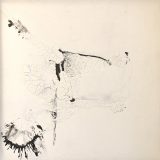Clear-Cut: The Point of Papercuts Recut of the Panel Discussion
November 17, 2016
Last Monday, the Chapman University Art Collections department debuted Clear-cut: The Point of Papercuts, a panel discussion on the art of papercuts in Beckman Hall.
Papercut artists and professors Jorge Benitez and Reni Gower kicked off the panel with a brief synopsis of the extensive research and international collaboration that was incorporated into the exhibition Geometric Aljamía: A Cultural Transliteration. In their presentation, Benitez and Gower spoke about how their research challenges the common notion that the West and the Middle East exist at either end of a cultural spectrum. In exploring shared geometric motifs, the artists featured in Geometric Aljamía: A Cultural Transliteration demonstrate that the relationship between the West and the Middle East has been one of continual collaboration and exchange rather than conflict and opposition.
After Benitez and Gower’s introduction, papercut artists Bovey Lee, Chris Natrop, and Margaret Sosa gave presentations about their individual work and their interpretation of the papercutting process. These presentations highlighted how culturally and artistically diverse papercutting can be while also exploring themes that are universal to papercut art.
In her presentation, Bovey Lee focused on how changing conceptions of her identity has informed her work. Lee began her research on papercutting in China where she learned that papercutting was traditionally a pastime of women; however, nearly all modern papercutting artists in China were men. This realization prompted Lee to create papercuts that represented different aspects of the female experience. The subject of Lee’s papercuts changed when she shifted to a broader conceptualization of her identity as someone part of an industrialized and, oftentimes, degrading world. Her recent papercuts explore how humans are constantly reshaping and forcing the environment to fit our own needs, rather than humans adapting themselves to fit within the natural world.
Chris Natrop talked about his desire to create an all encompassing, visceral experience through his art. In many of his exhibitions, Natrop’s papercuts are draped throughout the exhibition so that the viewer is able to walk through and interact with the art. The hanging of the papercuts is enhanced by ambient music as well as lights and videos that are played on the papercut and the walls of the exhibition space. Natrop explained that the purpose of this kind of exhibition is to make the viewer feel as though they are leaving the outside world in order to enter an alternate reality.
Margaret Sosa spoke about the Mexican tradition of papercutting called papel picado.
Papel picado originates in the pre-historic, indigenous traditions of making papercuts from tree bark. These papercuts were often used to decorate temples or burned as an offering to the gods. Sosa also discussed that Mexican papercutting is unique because it is made with tissue paper, using hammers and chisels. Sosa continues to use this technique in her own papercuts. Modern Mexican papercuts are typically strung up on a string and used as decoration at celebratory events such as Día de los Muertos (Day of the Dead). During Día de los Muertos, papercuts are draped over the altar or family shrine to represent the element of air (because they are so thin that they flutter in the air), while candles, food, and water represent fire, earth, and water respectively. While talking about her own works, Sosa spoke about the beauty that she finds in the transcendental nature of Mexican papercutting. Sosa can spend hours working on papercuts that, because they are so thin and fragile, are easily “ruined” or are only intended to be used at one event. Sosa described how because papercuts are only temporary, they are more exceptional and their interaction with the event and environment is enhanced.
The Art Collections Department is so thankful to Jorge Benitez, Reni Gower, Bovey Lee, Chirs Natrop, and Margaret Sosa for their participation in such an insightful and fascinating panel discussion!
We are grateful to the Escalette Permanent Art Collection Endowment for generously supporting this program.







